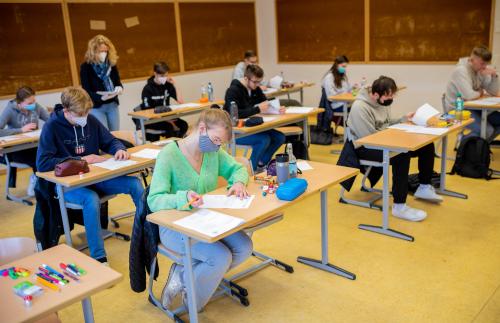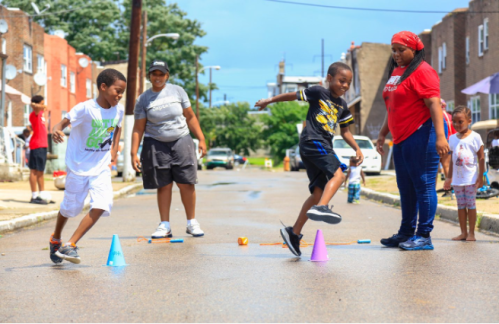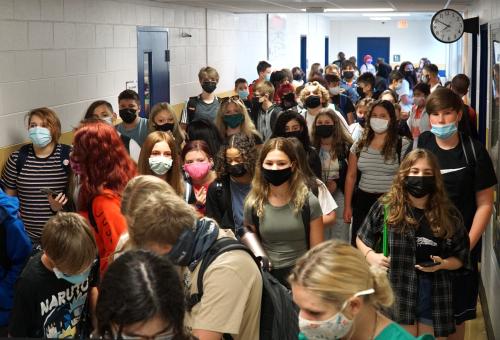Through their commitment to innovation and adaptation, today’s public libraries continue to be the “palaces for the people” envisaged by Andrew Carnegie well over a century ago, going far beyond their initial purpose of providing free access to copyrighted materials. Since their establishment in the later 19th century, they have been anchoring institutions that have played essential roles in the communities they serve.
Public libraries provide social infrastructures and a wide array of essential educational services: children’s and adult programs, resume workshops, job search assistance, homework assistance, and technical and research assistance. They are public spaces valued and used by individuals and organizations, day shelters for at-risk populations, and points of access to computers and high-speed Wi-Fi internet for the one in five Americans without residential or smartphone access. Today, as in the past, public libraries bridge learning opportunities for children when public schools close for holidays and summer break.
Researchers have extensively documented the potential extent of the adverse impacts of the COVID-19 pandemic on the educational outcomes for children through the shift from in-person to virtual learning by schools and other educational institutions. What may be less widely recognized by policymakers has been the impact of the loss of library services. In March 2020, 99% of all public libraries closed, removing access to critical child development and educational resources for families in almost every community in the country.
Many libraries have since reopened, but services remain limited with reduced hours of operation, restricted browsing, lack of access to public spaces, and limited-to-no in-person programs. Access to resources is slowly being expanded—modified for virtual delivery and contactless pick-up—but the loss of services continues to have damaging impacts.
Library Services and Use
Leading up to the pandemic, the demand for public library services was quite resilient—even in today’s internet age, where access to information has become readily available electronically to many families. Contrary to predictions that widespread internet use could make libraries obsolete, researchers studying U.S. communities during the 2000s estimate that circulation of adult and children’s physical books increased by 4.5% and 8.2%, respectively, when individuals gained access to high-speed residential internet.
Further, library use has remained robust. In 2018, patrons checked out over 2 billion items, including 750 million library items for children, and 80 million of them attended children’s programs. Based on a 2019 Gallup survey, visiting the public library is the most common cultural activity in America.
New Research on the Effects on Student Achievement
Recent research suggests that the disruptions to library services resulting from the COVID-19 pandemic are also likely to have had negative consequences for children’s educational outcomes. Ezra Karger, Peter Nencka, and I examined the effects of public library use on student achievement. In the past, researchers have had difficulty identifying the impacts of library use, since families that value education tend to visit libraries more often. We get around this challenge by studying the impact of sudden, substantial changes in public library capital spending (e.g., a new library branch or a major renovation) on library use and children’s tests scores for grades 3-8.
When a new branch opens or an existing branch is substantially renovated, we found that library visits increased (up 21%), as did children’s attendance at library events (up 18%), and children’s checkouts of books and other resources (up 21%). Student achievement in reading also increased significantly (but, as one might expect, not in math). We then compare the size of impact on student achievement to gains from the construction of a new elementary school building. On average, a new public library results in increases to student reading achievement that are 29% of the size of those associated with the opening of a new elementary school building, at 15% of the cost of the new school.
It is clear that public libraries are a resource that can supplement student learning, and with some creativity we might be able to leverage libraries to promote student learning in systematic ways. For example, libraries could help offset the extensively documented summer slide—the learning loss that occurs as children step away from classrooms during summer break. This loss is particularly acute for children from lower-income households who may not have access to enriching educational experiences over the summer.
In 2017, I worked with a local school district to explore how summer reading programs could mitigate the summer slide. Using student-level achievement data matched to families’ public library visit and checkout information, I estimated that students would need to do significantly more summer reading to counter the summer slide. Based on my estimates, students in primary elementary grades would have to read at least 100 books over the summer to mitigate two-thirds of the expected learning loss. The district adopted the Read 100! Program to change the paradigm of summer reading by setting a new bar for children in these grades to read 100 books. The program is low cost and easily implemented, though access to public libraries over the summer is a critical piece.
Moving Forward
Over the past 15 months, the social disruptions caused by the pandemic have had devastating impacts on the educational opportunities available to every community, not least because of the forced closures and loss of access to the services that public libraries provide. Re-establishing social infrastructures will be essential as the country exits the pandemic, and library administrators and staff have repeatedly demonstrated their nimbleness and adaptability to changing circumstances. This is the time to encourage and support post-COVID-19 cultural activities that include trips to the nation’s local public libraries, especially for families with children.
Header photo credit: Playful Learning Landscapes Action Network/Sahar Coston-Hardy.






Commentary
Public libraries continue to adapt, enriching communities across America
June 1, 2021